Italy wants its foreign tourists back but not at the expense of damage to its precious cultural heritage.
This summer's international headlines about tourists damaging Italy's sites and monuments weren't supposed to be like this. Just a few months ago there was much talk of rebuilding the country's tourist industry, devastated by a 10-week lockdown in the spring and the travel restrictions imposed by the covid-19 pandemic.
The relaunch was seen by the more optimistic in the sector as a golden opportunity to break away from the broken model of mass tourism, moving on from the bad old days of unruly visitors jumping in fountains and treating Italy's heritage with complacency or even downright disrespect.
There were grand plans of replacing selfie tourism with slow tourism, aimed at the more discerning visitor, who clutched a guide-book rather than a selfie stick.
Alfonsina Russo is the director of Parco Colosseo, the archaeological park incorporating the Colosseum, Roman Forum and Domus Aurea, which attracted 7.5 million tourists last year. In a May interview with Wanted in Rome, Russo was frank about a situation that she believes must change for the better, saying she hoped the “new tourists” would visit out a “need for nourishment” from the priceless heritage she oversees.
In the past “it was clear that it was mostly a selfie tourism” – Russo said – “tied to tours of less than two hours, interested in the photo shoot sometimes without the awareness and the memory of that shot.”
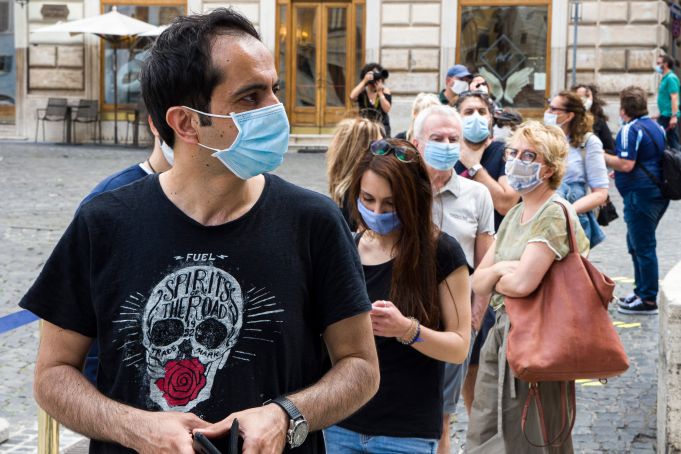
Russo's views were reflected by Eike Schmidt, the director of the Uffizi Gallery, who called for people to drop the “bucket list” approach in favour of savouring the moment through a “slow tourism” model. Florence mayor Dario Nardella echoed Schmidt by saying: "We want to use culture to send a message that after this crisis we want to change lifestyle models, the economy and model of tourism of the city."
This optimism was enhanced in late June when Italy was chosen by the United Nations World Tourism Organization (UNWTO) as the launch pad for the global Restart Tourism drive after the coronavirus lockdowns around the world, with Italy hailed as a "world tourism leader."
With lockdown in March, Italy's tourist numbers plummeted overnight, leaving normally crowded Italian cities virtually deserted for months. This was most evident in Venice where up until last year residents complained that the streets and canals were thronged with too many people, before suddenly bemoaning their absence from the spring onwards.
The unexpected situation saw Venice scrap its controversial tourist tax which was scheduled to come into effect on 1 July. In recent weeks the much-maligned giant cruise ships decided to steer clear of the city's lagoon, opting for the larger Italian ports of Genoa and Trieste instead.
This news was welcomed by activists but protested by Venetian gondoliers and restaurateurs who will miss the revenue. The whole affair has served to put Venice's complicated relationship with tourists – and mass tourism – back into the spotlight as never before.
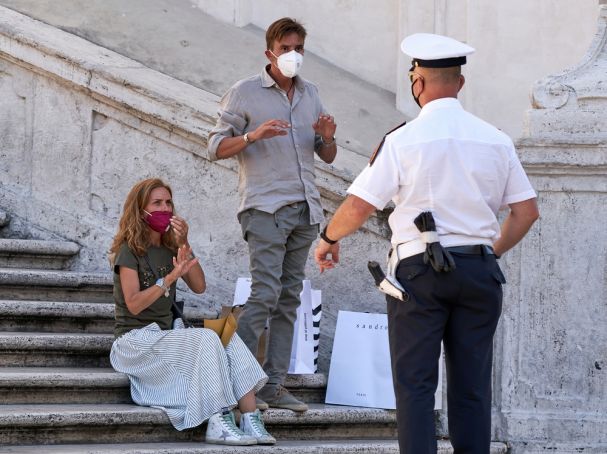
Rome is another city whose bread and butter is the hospitality industry. The capital too has a love-hate relationship with its foreign visitors. In the past the city has been accused of a complacent attitude to tourists, a case of "chewing them up and spitting them out," while Romans are quick to point to incidents of ignorant tourists splashing in historic fountains or, worse, carving their names into the Colosseum.
As foreign visitors return to Italy in small numbers – 70 per cent less than last August according to the Demoskopika research institute – there has been one negative tourist story after another in the media.
The narrative tends to be the same. Once a tourist commits a crime against Italian heritage – be it accidental or on purpose – Italy’s much-needed visitor suddenly becomes the enemy. These “barbarians” are the subject of vitriolic posts on social media, facing suggestions of draconian punishments from having their hands chopped off to life imprisonment.
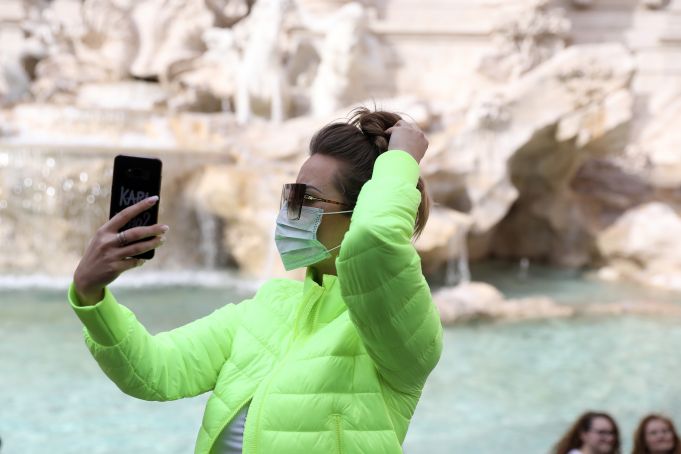
The first "bad tourist" story this summer was in Venice in early June, the day after European tourists were allowed to re-enter Italy.
The incident involved two middle-aged men, reportedly German, who swam down the Grand Canal, laughing off pleas from locals to get out, as their partners filmed their antics. The tourists were later apprehended by police as they walked through the city barefoot, dressed in just their wet swimming costumes. Officers fined the men €450 each and ordered them to put some clothes on.
In early August a group of young, and reportedly drunk, British tourists scaled the walls of the Roman Forum by night. The four tourists, aged between 17 and 19, were spotted by security guards who tipped off the carabinieri. The visitors were charged with trespassing and failure to respect a ban on entering the archaeological area, and were fined a total of €1,600 for their escapade.
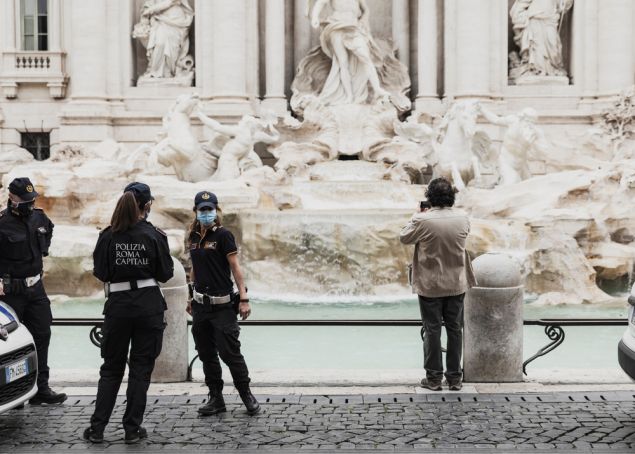
However all this was relatively harmless for what happened on 31 July at the Antonio Canova Museum in the northern Veneto region. An Austrian tourist, keen to take a selfie, sat down on Canova's plaster model for the Paolina Borghese masterpiece in Galleria Borghese. After sprawling back on its base, the tourist managed to snap off three of the statue's toes in his effort to stand up. Far from alerting museum authorities, the man made sure that nobody saw what he had done before doing a runner.
The news was announced by politician and art critic Vittorio Sgarbi, the president of the foundation in charge of the museum in Possagno, Canova's hometown. An outraged Sgarbi called on police to identify the "vandal" and "not let him return to his homeland unpunished" for the "unacceptable" damage caused to the work. For once, Sgarbi's views were shared by the majority, but still no trace of the offending tourist.
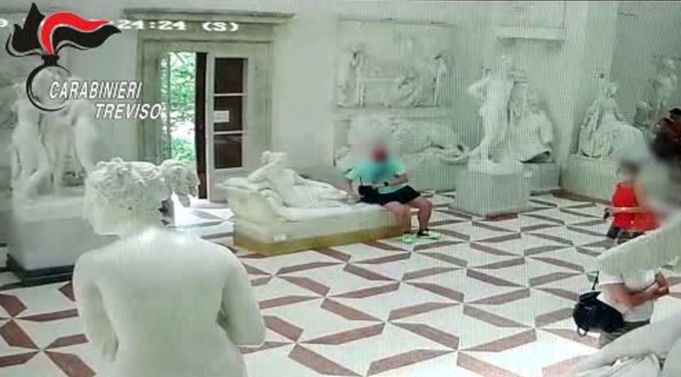
Within days Italian police managed to track him down, thanks to the Canova museum reservation made by his wife, upon which the 50-year-old man admitted his responsibility, as his case is sent before the public prosecutor's office in Treviso.
In mid-August a police investigation began after a tourist climbed onto the roof of a bath house in Italy's archaeological site of Pompeii. The probe was launched after images of the unidentified woman surfaced on the internet, causing a storm of controversy on social media. Police are attempting to establish the identity of the visitor who was photographed while taking selfies on top of the bath house during the Ferragosto holiday.
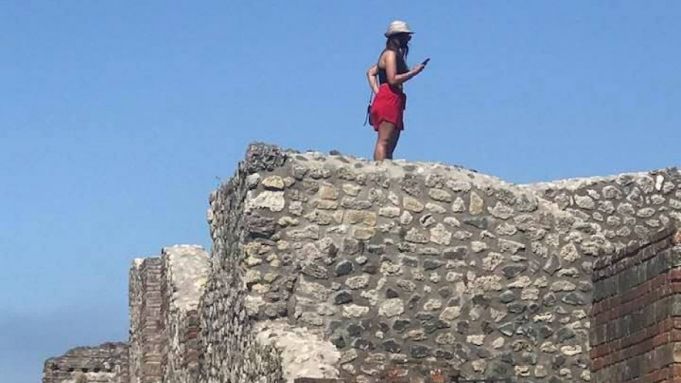
The outgoing Pompeii manager Massimo Osanna said the woman's "deplorable" and “uncivil” behaviour was dangerous to both her and the ancient building. If caught, she could face imprisonment from three months to a year, with fines of between €1,000 and €3,000, reports Italian newspaper La Repubblica.
Several days after this, two tourists, aged 61 and 44, were caught by Rome police as they used a coin to scrape their names into the staircase at the Trevi Fountain. The couple, from Germany and Slovakia, were reported for damaging a site of historical and cultural interest. They also received a fine of €450 and a temporary ban from returning to the monument. Rome mayor Virginia Raggi commended the police for their work, tweeting: "No tolerance for those who deface or damage the monuments of Rome."
The trouble continued right to the end of the summer season. On 20 September a 32-year-old Irish tourist was caught carving his name into the Colosseum where, a few days earlier, a 40-year-old Polish tourist crash-landed his drone inside the ancient amphitheatre despite being reminded beforehand that it was strictly a no-fly zone.
As Italy juggles the fine line between restarting its devastated tourism sector with keeping new covid-19 cases to a minimum, it continues to face the thorny question of how to protect its artistic and cultural heritage from 'vandal tourists' and selfie tourism.
Perhaps the answer lies somewhere between increased vigilance and somehow ensuring that visitors are better prepared for the splendour – precious and fragile – that Italy has to offer.
By Andy Devane
This article is published in the September 2020 online edition of Wanted in Rome magazine. Cover image - photo credit: MarbellaStudio / Shutterstock.com.


















